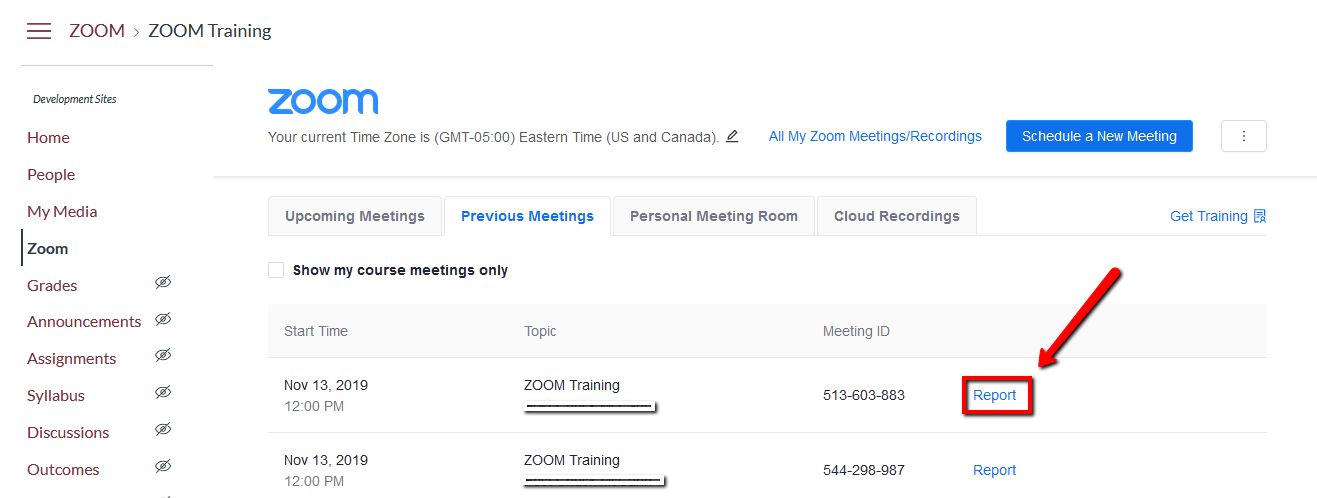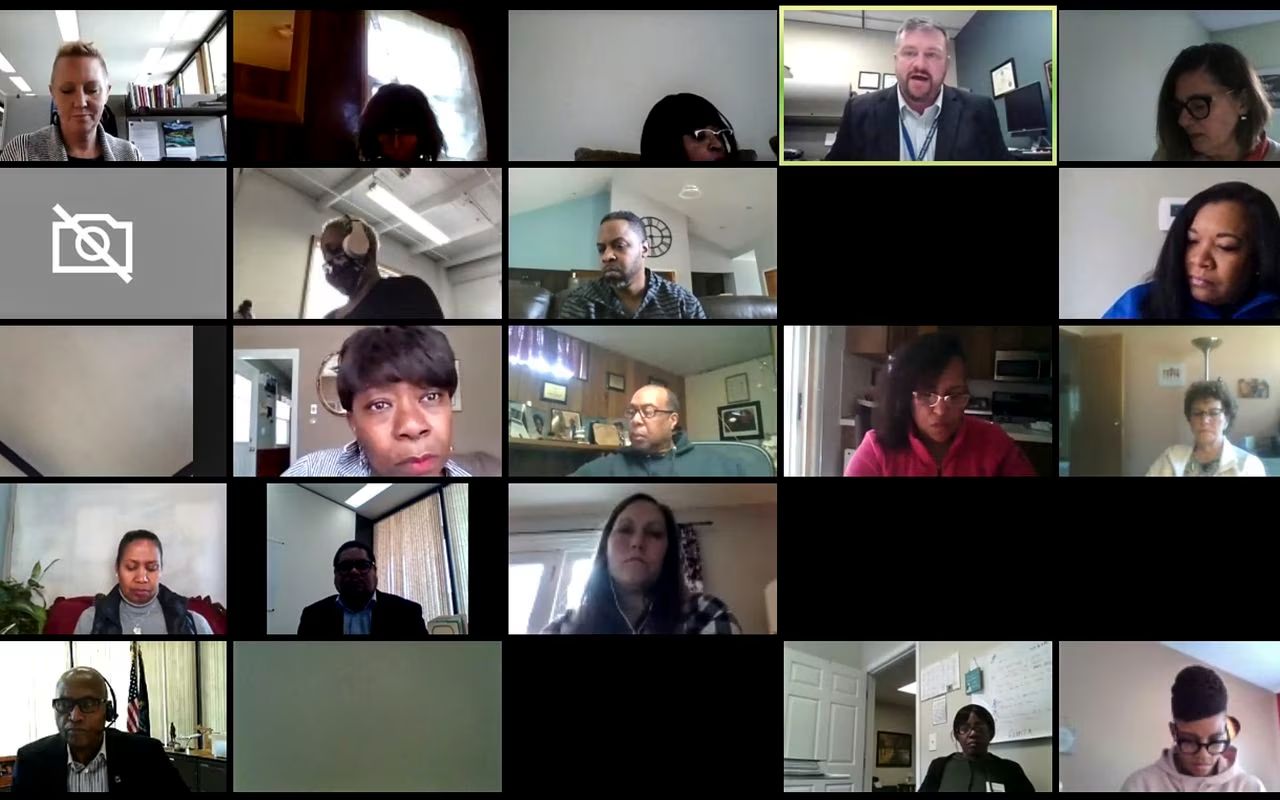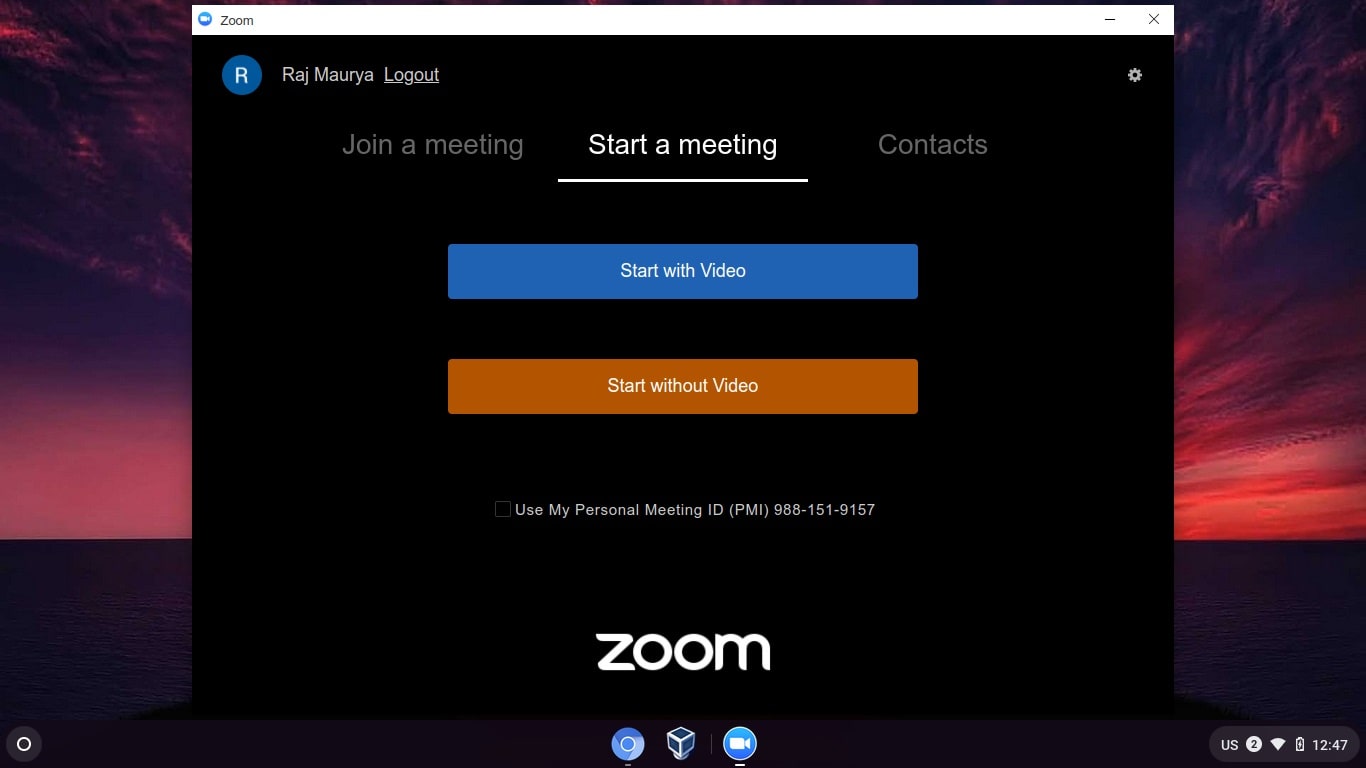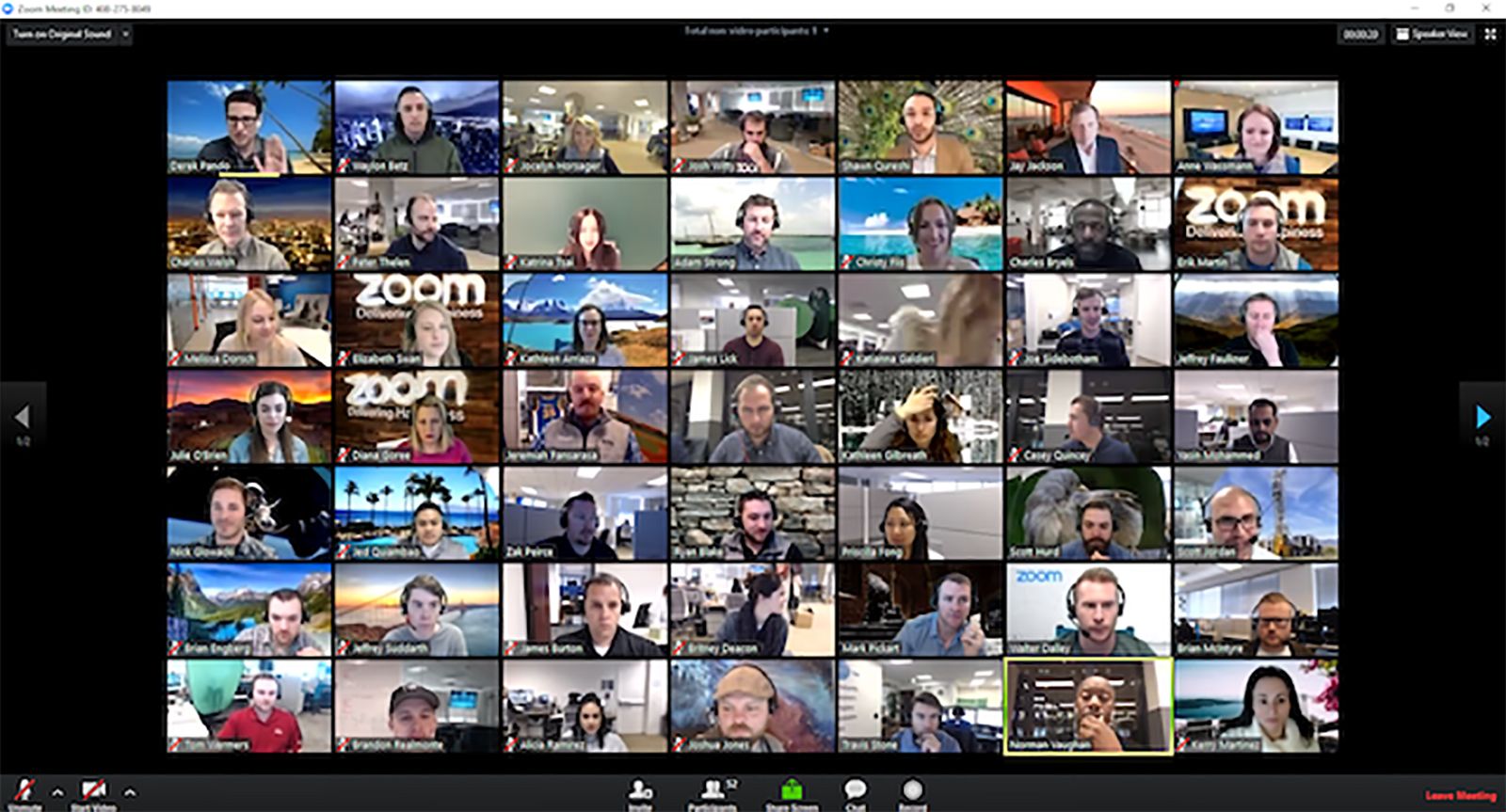Introduction
Welcome to the digital age where online meetings and virtual classrooms have become the new norm. With the advent of platforms like Zoom, connecting with remote teams or facilitating remote learning has become effortless. However, one challenge that organizations and educational institutions face is accurately tracking the attendance of participants in Zoom sessions.
Attendance tracking is a crucial aspect of conducting meetings, webinars, or online classes. It helps to ensure that participants are engaged and present during the session, and provides valuable information for record-keeping and analysis. Additionally, accurate attendance tracking can have a significant impact on measuring participant engagement, evaluating the effectiveness of the session, and maintaining compliance with attendance requirements.
In this article, we will explore the importance of attendance tracking in Zoom and discuss various methods to effectively track attendance. We will also delve into automating the attendance tracking process, highlighting integrations, APIs, and plugins that can simplify the task for organizations and educators.
Whether you are a business conducting virtual team meetings, a trainer delivering online courses, or an educational institution facilitating remote learning, this article will equip you with the knowledge and strategies to optimize your attendance tracking in Zoom.
Understanding the Importance of Attendance Tracking
Attendance tracking serves as a fundamental aspect of any meeting or learning environment, and this holds true even in the virtual realm. It provides valuable insights into participant engagement, session effectiveness, and compliance with attendance requirements. Let’s explore why attendance tracking is crucial in Zoom.
Firstly, tracking attendance in Zoom ensures that participants are actively engaged and present during the session. It helps to maintain accountability and encourages participants to stay focused and actively participate. For businesses, this means ensuring that team members are attending and contributing to important meetings, fostering collaboration, and ensuring collective decision-making. In educational settings, tracking attendance helps ensure that students are attending virtual classes, participating in discussions, and completing assignments.
Secondly, attendance tracking provides valuable data for analysis and evaluation. By monitoring attendance patterns, organizations and educational institutions can gain insights into the level of participant engagement and the effectiveness of their sessions. This data can be used to identify areas for improvement, tailor content to meet specific needs, and enhance the overall learning or meeting experience.
Moreover, accurate attendance tracking is crucial for compliance purposes. Many organizations and educational institutions have attendance requirements to meet regulatory standards or to maintain eligibility for funding. Tracking attendance in Zoom helps to ensure compliance with these requirements, providing a verifiable record of participant presence and engagement.
Furthermore, attendance tracking plays a vital role in maintaining the integrity and security of virtual sessions. By accurately identifying participants and tracking their attendance, organizations can prevent unauthorized access and protect sensitive information. This is particularly important for businesses conducting confidential meetings or educational institutions hosting classes with restricted access.
Overall, attendance tracking in Zoom is essential for maintaining accountability, evaluating session effectiveness, ensuring compliance, and enhancing security. By implementing effective attendance tracking practices, organizations and educational institutions can optimize their virtual meetings and learning experiences.
Benefits of Attendance Tracking in Zoom
Attendance tracking in Zoom offers numerous benefits for both organizations and educational institutions. Let’s explore some of the key advantages:
1. Engagement Monitoring: Attendance tracking allows you to monitor participant engagement during virtual meetings or classes. By keeping track of who is present, you can identify individuals who may be disengaged or encountering technical difficulties, allowing for timely intervention and support.
2. Session Evaluation: Accurate attendance records provide valuable data for evaluating the effectiveness of meetings or classes. You can analyze trends in participation and identify areas for improvement in content delivery, engagement strategies, or technical infrastructure.
3. Compliance Requirements: Attendance tracking in Zoom helps organizations and educational institutions meet compliance requirements. For businesses, this includes maintaining records of team meeting attendance for auditing purposes. For educational institutions, it ensures compliance with attendance regulations and funding eligibility requirements.
4. Resource Allocation: Attendance data can assist in resource allocation and scheduling. With insight into participant availability and attendance patterns, businesses can schedule meetings at convenient times for maximum participation. In educational settings, attendance tracking helps with planning and allocating resources to support students effectively.
5. Participant Accountability: Tracking attendance in Zoom fosters participant accountability. Individuals are aware that their attendance is being recorded, encouraging active engagement and discouraging absenteeism. This is particularly important in educational settings, where regular class attendance contributes to academic success.
6. Security Enhancement: Attendance tracking adds a layer of security to virtual meetings or classes. By accurately identifying participants, organizations can mitigate the risk of unauthorized access and protect confidential information discussed during sessions.
7. Performance Measurement: Attendance records in Zoom can be used as a performance measurement tool. This can be particularly valuable in educational settings, where attendance and engagement contribute to grading or assessment criteria.
By harnessing the benefits of attendance tracking in Zoom, organizations and educational institutions can enhance participant engagement, evaluate session effectiveness, ensure compliance, optimize resource allocation, improve security, and measure performance.
Methods for Manual Attendance Tracking
When it comes to tracking attendance in Zoom, there are several manual methods that can be employed. These methods require the host or facilitator to actively monitor and record participant attendance. Let’s explore three common manual attendance tracking methods:
1. Utilizing the Zoom Attendance Report Feature: Zoom provides an Attendance Report feature that allows hosts to generate a report containing the names and join/leave times of participants. Hosts can access this feature through the Zoom web portal or desktop client, making it a convenient method for tracking attendance. Simply generate the report before, during, or after the meeting or class, and record the attendance data for future reference or compliance purposes.
2. Using Third-Party Attendance Tracking Tools: There are various third-party attendance tracking tools available that integrate with Zoom. These tools often provide additional features like automated attendance tracking, analytics, and integration with other platforms such as learning management systems (LMS) or customer relationship management (CRM) systems. Hosts can explore these tools to simplify the attendance tracking process and gain more insights into participant engagement and session performance.
3. Implementing a Custom Attendance Tracking System: Another manual method is to create a custom attendance tracking system tailored to your specific needs. This involves designing a template or form to record participant names and attendance data manually. This method requires more effort and organization, as the host or facilitator needs to ensure accurate data entry and record-keeping. However, it provides flexibility in terms of customization and allows for the inclusion of additional information or metrics specific to your requirements.
While manual attendance tracking methods require active involvement and effort from the host or facilitator, they can be effective for smaller meetings or classes with a manageable number of participants. However, as the number of participants increases or the need for more automated and streamlined tracking arises, hosts may need to explore other methods to enhance the efficiency of attendance tracking in Zoom.
Method 1: Utilizing the Zoom Attendance Report Feature
One of the simplest and most convenient methods for manual attendance tracking in Zoom is by utilizing the built-in Attendance Report feature. This feature allows hosts to generate a report that includes the names of participants and their join/leave times during a meeting or class.
To utilize the Zoom Attendance Report feature:
1. As the host of the Zoom meeting or class, log in to the Zoom web portal or desktop client.
2. Navigate to the “Reports” section and select “Usage” or “Meeting” reports.
3. Locate the meeting or session for which you wish to track attendance and select it.
4. Look for the “Attendance” or “Generate Attendance Report” option and click on it.
5. Zoom will generate an attendance report in CSV format that you can download. This report includes participant names, join/leave times, and other relevant details.
6. Open the downloaded attendance report in a spreadsheet program like Microsoft Excel or Google Sheets.
7. Review and record the attendance data as needed for your tracking purposes or compliance requirements.
The Zoom Attendance Report feature offers a quick and easy way to generate attendance reports for meetings or classes. This method is particularly useful for smaller sessions where manually recording attendance is manageable. The attendance data can be used for various purposes, such as monitoring participant engagement, evaluating session effectiveness, and ensuring compliance with attendance requirements.
Additionally, the Zoom Attendance Report feature provides a transparent record of participant presence and can be a valuable resource when conducting audits or generating attendance certificates. It streamlines the process of collecting and recording attendance information, saving time and effort for hosts or facilitators.
By utilizing the built-in Attendance Report feature in Zoom, hosts can efficiently track attendance, ensure accountability, and gather valuable data for analyzing participant engagement and session performance.
Method 2: Using Third-Party Attendance Tracking Tools
If you’re looking for a more automated and feature-rich solution for tracking attendance in Zoom, utilizing third-party attendance tracking tools can be a game-changer. These tools integrate with Zoom and offer additional functionalities such as automated attendance tracking, advanced analytics, and seamless integration with other platforms. Let’s explore this method in more detail.
When it comes to third-party attendance tracking tools, there are several options available based on your specific needs and preferences. These tools typically offer the following features:
1. Automated Attendance Tracking: Unlike manual methods, third-party tools can automatically track attendance by syncing with your Zoom sessions. They can capture participant data such as names, join/leave times, and duration of attendance, eliminating the need for manual record-keeping. This reduces the chance of errors and saves valuable time and effort for hosts or facilitators.
2. Advanced Analytics and Insights: Many third-party attendance tracking tools provide analytics and reporting features that go beyond basic attendance records. They offer insights into participant engagement, session performance, and attendance patterns. These analytics can help hosts or educators to identify trends, measure participant involvement, and make data-driven decisions to improve future sessions.
3. Integration with Other Platforms: Third-party attendance tracking tools often integrate with popular learning management systems (LMS), customer relationship management (CRM) software, or other collaboration tools. This allows for seamless data transfer and broader functionality, such as generating attendance reports within your preferred platform or integrating attendance data with existing workflows.
4. Customization and Flexibility: These tools often offer customization options to fit your specific requirements. You can configure settings related to attendance thresholds, session duration, and data presentation. This ensures that the attendance tracking process aligns with your unique needs and preferences.
Before selecting a third-party attendance tracking tool, it’s essential to research and evaluate different options based on factors such as pricing, features, ease of use, and customer reviews. Popular choices include tools like AttendanceBot, Prodoscore, or Classroom Attendance by Hello Focus, among others.
By leveraging third-party attendance tracking tools, hosts or educators can streamline the attendance tracking process, gain deeper insights into participant engagement, automate record-keeping, and integrate attendance data with other platforms or systems.
It’s worth noting that while these tools offer added convenience and functionality, they might come with associated costs. However, the benefits they provide in terms of time savings, accuracy, and advanced analytics make them a valuable investment, especially for larger organizations or educational institutions.
Method 3: Implementing a Custom Attendance Tracking System
For organizations or educational institutions with specific attendance tracking needs or those looking for a more tailored approach, implementing a custom attendance tracking system can be an effective solution. This method allows you to create a system that aligns with your unique requirements and integrates seamlessly with your existing processes. Let’s explore this method further.
Implementing a custom attendance tracking system involves designing a template or form that captures participant attendance data during Zoom meetings or classes. Here are the steps to create a custom attendance tracking system:
1. Define Attendance Parameters: Determine the attendance parameters you want to track, such as participant names, join/leave times, or additional information specific to your needs.
2. Create an Attendance Template: Design an attendance template using tools like Microsoft Excel, Google Sheets, or custom-built forms. Include columns or fields to capture the attendance data you identified in the previous step.
3. Distribute the Attendance Template: Share the attendance template with participants before or during the meeting or class. This can be done by sending the template as an attachment via email, providing a link to an online form, or using collaboration tools like Google Drive or Microsoft OneDrive.
4. Participant Data Entry: Participants will enter their attendance details into the provided template or form during the session. They can fill in their names and mark their join/leave times, or you can have them enter a unique identifier specific to your system.
5. Collect and Review Attendance Data: Once the session concludes, collect the completed attendance templates or forms from participants. Review the data for accuracy and completeness before recording it for future reference or compliance purposes.
6. Record-Keeping and Analysis: Store the attendance data in a secure location, ensuring it is easily accessible for record-keeping or reporting purposes. Analyze the data as needed to gain insights into participant attendance patterns, engagement levels, or session effectiveness.
Implementing a custom attendance tracking system provides flexibility to tailor the process to your unique needs. It allows you to incorporate additional fields or metrics that are relevant to your organization or educational institution. However, keep in mind that this method requires more manual effort and organization compared to other methods.
In addition to manual data entry, you can enhance the custom attendance tracking system by leveraging automation and integration. For example, you can use macros or scripts in spreadsheet software to automate certain tasks, or integrate the attendance data with other systems or workflows using APIs or webhooks.
By implementing a custom attendance tracking system, you have complete control over the attendance process, ensuring it aligns with your specific requirements. This method can be particularly valuable for businesses or institutions that have unique compliance needs, adaptability requirements, or the desire for a more personalized attendance tracking approach.
Automating Attendance Tracking in Zoom
Automating attendance tracking in Zoom can significantly streamline the process, save time, and enhance accuracy. By integrating Zoom with various platforms and leveraging automation tools, hosts or educators can automatically track attendance without relying on manual methods. Let’s explore three effective methods for automating attendance tracking in Zoom.
1. Integrating Zoom with CRM or LMS Platforms: Many customer relationship management (CRM) or learning management system (LMS) platforms offer integrations with Zoom. By connecting these platforms with Zoom, attendance data can be automatically synced. Participants’ attendance records are captured within the CRM or LMS system, eliminating the need for separate attendance tracking. This integration simplifies the process and provides a centralized location for attendance records and participant engagement data.
2. Leveraging Zoom APIs for Attendance Tracking Automation: Zoom provides robust APIs that enable developers to programmatically interact with the Zoom platform. By leveraging these APIs, organizations can build custom attendance tracking solutions tailored to their unique needs. Developers can create scripts or applications that automatically extract attendance data from Zoom meetings and store it in a database or integrate it with other systems for further analysis or reporting.
3. Exploring Attendance Tracking Plugins for Zoom: Another way to automate attendance tracking in Zoom is by utilizing attendance tracking plugins or apps specifically designed for the platform. These plugins integrate with Zoom and provide additional features, such as automated attendance recording, analytics, and seamless integration with other tools or platforms. They offer a user-friendly interface that makes attendance tracking a breeze, simplifying the process for hosts or educators.
Automating attendance tracking in Zoom offers numerous advantages. It eliminates the need for manual data entry, reduces the chances of human error, and ensures real-time and accurate attendance records. Automation also saves valuable time and effort for hosts or educators, allowing them to focus on facilitating the session rather than administrative tasks.
Moreover, automation enables hosts or educators to gain deeper insights into participant engagement, attendance patterns, and session effectiveness. This data can be used for future planning, performance measurement, or compliance purposes. By efficiently tracking attendance, organizations can optimize their resources, improve participant accountability, and enhance the overall experience of Zoom meetings or classes.
It’s important to note that the level of automation and the specific methods used may vary depending on the tools, platforms, and systems implemented within an organization. Before proceeding with automation, it is crucial to assess requirements, evaluate available options, and ensure compatibility with existing technology infrastructure.
By automating attendance tracking in Zoom, organizations can streamline processes, improve accuracy, gain valuable insights, and enhance the overall efficiency of virtual meetings or classes.
Method 1: Integrating Zoom with CRM or LMS Platforms
Integrating Zoom with customer relationship management (CRM) or learning management system (LMS) platforms offers a seamless way to automate attendance tracking. This method allows for automatic synchronization of attendance data, eliminating the need for manual tracking and data entry. Let’s explore this method in more detail.
CRM and LMS platforms are commonly used by organizations and educational institutions to manage customer or learner interactions, respectively. By integrating these platforms with Zoom, attendance data can be captured and stored within the CRM or LMS system, making attendance tracking a streamlined and automated process.
To integrate Zoom with a CRM or LMS platform for attendance tracking:
1. Identify the CRM or LMS Platform: Choose a CRM or LMS platform that offers integration capabilities with Zoom. Popular CRM options include Salesforce, HubSpot, or Zoho CRM, while popular LMS platforms include Moodle, Canvas, or Blackboard.
2. Enable the Integration: Activate the Zoom integration within your chosen CRM or LMS platform. This typically involves configuring settings and establishing the connection between the two systems using API keys or authentication protocols provided by both Zoom and the CRM/LMS platform.
3. Set up Attendance Tracking: Once integration is enabled, define the specific attendance parameters you want to track. These parameters may include participant names, join/leave times, duration of attendance, or any additional information required based on your organization’s needs.
4. Attend Zoom Meetings or Classes: Host or facilitate Zoom meetings or classes as usual. The integration will automatically capture attendance data in real-time, syncing it with the CRM or LMS platform you have integrated with.
5. Access and Analyze Attendance Data: Attendance data is now available within the CRM or LMS platform. You can view individual participant attendance records, generate reports, and gain insights into attendance patterns, engagement levels, or session effectiveness. This data can assist in measuring learner progress, evaluating the success of training programs, or identifying areas for improvement in customer interactions.
Integrating Zoom with CRM or LMS platforms for attendance tracking offers several benefits. It eliminates the need for manual data entry, reducing errors and saving time. Additionally, it provides a centralized location for attendance records and participant engagement data, making it easy to access and analyze attendance data alongside other relevant information stored within the CRM or LMS platform.
By automating attendance tracking through integration, organizations can enhance the accuracy and efficiency of their attendance tracking processes, improve participant accountability, and gain valuable insights for decision-making and analysis.
Method 2: Leveraging Zoom APIs for Attendance Tracking Automation
Leveraging Zoom’s robust application programming interfaces (APIs) offers a powerful way to automate attendance tracking. By utilizing Zoom APIs, organizations can extract attendance data from Zoom meetings and classes programmatically, allowing for seamless integration with other systems and workflows. Let’s explore this method in more detail.
Zoom provides a range of APIs that enable developers to interact with the Zoom platform and access various functionalities. Leveraging these APIs, organizations can build custom solutions to automate attendance tracking in Zoom. Here’s how you can leverage Zoom APIs for attendance tracking automation:
1. Understand Zoom APIs: Familiarize yourself with the available Zoom APIs and their respective functionalities. Review the documentation provided by Zoom to gain a comprehensive understanding of how the APIs work and what options are available for attendance tracking.
2. Develop Custom Scripts or Applications: Utilize programming languages such as Python, JavaScript, or Ruby to develop custom scripts or applications that interact with the Zoom APIs. These scripts or applications can extract attendance data from Zoom meetings, including participant names, join/leave times, and other relevant details.
3. Configure API Authorization: Follow the authentication process outlined by Zoom to authorize your custom scripts or applications to access the necessary Zoom APIs. This typically involves generating and managing API keys or tokens that authenticate your application with Zoom.
4. Extract and Store Attendance Data: Utilize the Zoom APIs to extract attendance data directly from Zoom meetings or classes. Once retrieved, store the attendance data in a database or integrate it with other systems or workflows for further analysis, reporting, or record-keeping.
5. Automate and Schedule Data Extraction: Depending on your needs, develop automation scripts or applications that can extract attendance data from Zoom meetings automatically and at specific intervals. By scheduling these processes, you can ensure that attendance data is consistently and automatically captured.
6. Integrate with Reporting or Analysis Tools: Integrate the attendance data obtained from the Zoom APIs with reporting or analysis tools of your choice. This allows for deeper analysis of attendance patterns, participant engagement, and other relevant metrics that can help drive decision-making and improve session effectiveness.
Leveraging Zoom APIs for attendance tracking automation provides organizations with a high level of flexibility and customization. By building custom solutions, organizations can align attendance tracking with their unique requirements and seamlessly integrate data with their existing systems and workflows.
It’s important to note that implementing this method requires technical expertise or assistance from developers familiar with working with APIs. However, the investment in development can yield significant benefits by automating attendance tracking, reducing manual effort, and enabling advanced data analysis.
By leveraging Zoom APIs, organizations can streamline attendance tracking processes, enhance accuracy, and gain actionable insights for improving engagement and session effectiveness.
Method 3: Exploring Attendance Tracking Plugins for Zoom
If you’re looking for a user-friendly and feature-rich solution to automate attendance tracking in Zoom, exploring attendance tracking plugins specifically designed for Zoom can be a valuable option. These plugins offer additional functionalities, seamless integration with Zoom, and intuitive interfaces that simplify the attendance tracking process. Let’s delve into this method in more detail.
Attendance tracking plugins for Zoom are designed to enhance the default features of Zoom and provide automated attendance tracking capabilities. Here’s how you can leverage attendance tracking plugins for automation:
1. Research and Identify Plugins: Explore the available attendance tracking plugins for Zoom. Conduct thorough research to understand the features, pricing, and compatibility of various options. Some popular attendance tracking plugins for Zoom include Attendant Bot, Krisp, or MeetingSift.
2. Install and Configure the Plugin: Once you have chosen a suitable attendance tracking plugin, install it on your Zoom account or device. Follow the plugin’s setup instructions to configure it to your requirements. This typically involves granting necessary permissions and authorizations.
3. Enable Attendance Tracking: Once the plugin is installed and configured, attendance tracking features become available during Zoom meetings or classes. These features often include automated tracking of participant presence, duration of attendance, and in some cases, even engagement metrics.
4. Access Attendance Reports: Attendance tracking plugins typically generate comprehensive attendance reports that can be accessed directly within the plugin or exported for further analysis. These reports provide insights into participant attendance, absentees, and session statistics required for effective monitoring and record-keeping.
5. Utilize Additional Features: Attendance tracking plugins often offer additional features to enhance the overall meeting or class experience. These features can include polling, Q&A sessions, participant engagement analytics, or integration with other tools for streamlined workflows.
Attendance tracking plugins for Zoom provide a user-friendly and efficient way to automate attendance tracking. They eliminate the need for manual data entry and simplify the process for hosts or educators. By leveraging these plugins, organizations can spend less time on administrative tasks and focus more on facilitating engaging and productive sessions.
It’s important to note that while attendance tracking plugins offer convenience and additional features, they may come with associated costs depending on the plugin provider and plan chosen. However, the benefits in terms of time savings, accuracy, and advanced reporting capabilities make them a worthwhile investment, especially for organizations with larger attendee bases or complex attendance tracking requirements.
By exploring and utilizing attendance tracking plugins for Zoom, organizations can streamline attendance tracking processes, improve accuracy, and gain valuable insights for enhancing participant engagement and session effectiveness.
Best Practices for Effective Attendance Tracking in Zoom
To ensure accurate and efficient attendance tracking in Zoom, it is essential to follow best practices that enhance the overall experience and reliability of the process. By incorporating these practices, organizations and educators can optimize attendance tracking and make the most out of their virtual meetings or classes. Let’s explore some of these best practices:
1. Clearly Communicate Attendance Expectations: Prior to the meeting or class, clearly communicate attendance expectations to participants. Provide information on how attendance will be tracked and any specific requirements they need to follow, such as turning on their video, using their real names, or completing an attendance form. This helps set clear expectations and ensures accurate tracking.
2. Utilize Zoom’s Attendance Report Feature: Take advantage of Zoom’s built-in Attendance Report feature. Regularly generate attendance reports before, during, or after the meeting or class. This provides a record of participant presence and is useful for record-keeping, compliance, and analyzing attendance trends.
3. Incorporate Participant Engagement Strategies: Encourage participants to engage actively during the session. Incorporate interactive elements like polls, challenges, or discussions to sustain participant involvement. Higher engagement levels lead to more accurate attendance tracking and a more productive session overall.
4. Consistently Enforce Attendance Tracking: Ensure that attendance tracking is consistently enforced for all meetings or classes. Make attendance a priority and set the expectation that participants need to be present and engaged. This helps maintain accountability and a culture of active participation.
5. Automate Attendance Tracking with Integration or Plugins: Consider automating the attendance tracking process by leveraging integrations with CRM or LMS platforms or utilizing attendance tracking plugins specifically designed for Zoom. These tools can streamline the process, reduce manual effort, and provide additional features for enhanced attendance tracking.
6. Regularly Assess and Improve Attendance Tracking Processes: Continuously evaluate the effectiveness of your attendance tracking methods. Assess whether the chosen methods are meeting your needs and whether any adjustments or improvements are necessary. This ensures that attendance tracking remains accurate and aligned with your goals.
7. Maintain Data Privacy and Security: When collecting and storing attendance data, prioritize data privacy and security. Adhere to relevant data protection regulations and ensure that participant information is handled with care. Implement appropriate security measures to protect attendance records from unauthorized access.
8. Provide Attendance Confirmation or Certificates: For educational institutions or organizations requiring attendance confirmation, consider providing attendance certificates or records. This can serve as proof of attendance and is particularly useful for compliance or verification purposes.
By following these best practices, organizations and educators can effectively track attendance in Zoom, maintain participant engagement, and utilize attendance data for analysis and decision-making.
Conclusion
Effective attendance tracking in Zoom is essential for organizations and educational institutions to ensure participant engagement, evaluate session effectiveness, and maintain compliance with attendance requirements. By implementing the various methods discussed in this article, hosts and educators can efficiently track attendance and optimize the virtual meeting or class experience.
We explored manual methods such as utilizing the Zoom Attendance Report feature, using third-party attendance tracking tools, and implementing a custom attendance tracking system. These methods provide flexibility and convenience for different tracking needs and can be effective for smaller meetings or classes.
Additionally, we delved into automation methods, including integrating Zoom with CRM or LMS platforms, leveraging Zoom APIs for attendance tracking automation, and exploring attendance tracking plugins for Zoom. These automation methods enhance accuracy, save time, and offer advanced analytics and features for more streamlined attendance tracking.
It is crucial to follow best practices to ensure accurate and efficient attendance tracking. Clear communication of attendance expectations, consistent enforcement of tracking, and incorporating participant engagement strategies all contribute to successful attendance monitoring.
By adopting these methods and best practices, organizations and educators can optimize their attendance tracking in Zoom. They can effectively monitor participant engagement, evaluate session effectiveness, ensure compliance, and gain valuable insights for continuous improvement.
As virtual meetings and online learning continue to be a prominent part of our digital landscape, mastering attendance tracking in Zoom becomes increasingly important. With the right methods, automation, and commitment to best practices, hosts and educators can achieve accurate attendance tracking and enhance the overall success of their virtual interactions.

























